Nariman Farsad
Meta-World+: An Improved, Standardized, RL Benchmark
May 16, 2025Abstract:Meta-World is widely used for evaluating multi-task and meta-reinforcement learning agents, which are challenged to master diverse skills simultaneously. Since its introduction however, there have been numerous undocumented changes which inhibit a fair comparison of algorithms. This work strives to disambiguate these results from the literature, while also leveraging the past versions of Meta-World to provide insights into multi-task and meta-reinforcement learning benchmark design. Through this process we release a new open-source version of Meta-World (https://github.com/Farama-Foundation/Metaworld/) that has full reproducibility of past results, is more technically ergonomic, and gives users more control over the tasks that are included in a task set.
Multi-Task Reinforcement Learning Enables Parameter Scaling
Mar 07, 2025



Abstract:Multi-task reinforcement learning (MTRL) aims to endow a single agent with the ability to perform well on multiple tasks. Recent works have focused on developing novel sophisticated architectures to improve performance, often resulting in larger models; it is unclear, however, whether the performance gains are a consequence of the architecture design itself or the extra parameters. We argue that gains are mostly due to scale by demonstrating that naively scaling up a simple MTRL baseline to match parameter counts outperforms the more sophisticated architectures, and these gains benefit most from scaling the critic over the actor. Additionally, we explore the training stability advantages that come with task diversity, demonstrating that increasing the number of tasks can help mitigate plasticity loss. Our findings suggest that MTRL's simultaneous training across multiple tasks provides a natural framework for beneficial parameter scaling in reinforcement learning, challenging the need for complex architectural innovations.
Video-Language Critic: Transferable Reward Functions for Language-Conditioned Robotics
May 30, 2024Abstract:Natural language is often the easiest and most convenient modality for humans to specify tasks for robots. However, learning to ground language to behavior typically requires impractical amounts of diverse, language-annotated demonstrations collected on each target robot. In this work, we aim to separate the problem of what to accomplish from how to accomplish it, as the former can benefit from substantial amounts of external observation-only data, and only the latter depends on a specific robot embodiment. To this end, we propose Video-Language Critic, a reward model that can be trained on readily available cross-embodiment data using contrastive learning and a temporal ranking objective, and use it to score behavior traces from a separate reinforcement learning actor. When trained on Open X-Embodiment data, our reward model enables 2x more sample-efficient policy training on Meta-World tasks than a sparse reward only, despite a significant domain gap. Using in-domain data but in a challenging task generalization setting on Meta-World, we further demonstrate more sample-efficient training than is possible with prior language-conditioned reward models that are either trained with binary classification, use static images, or do not leverage the temporal information present in video data.
Deep Unfolding for Iterative Stripe Noise Removal
Sep 27, 2022

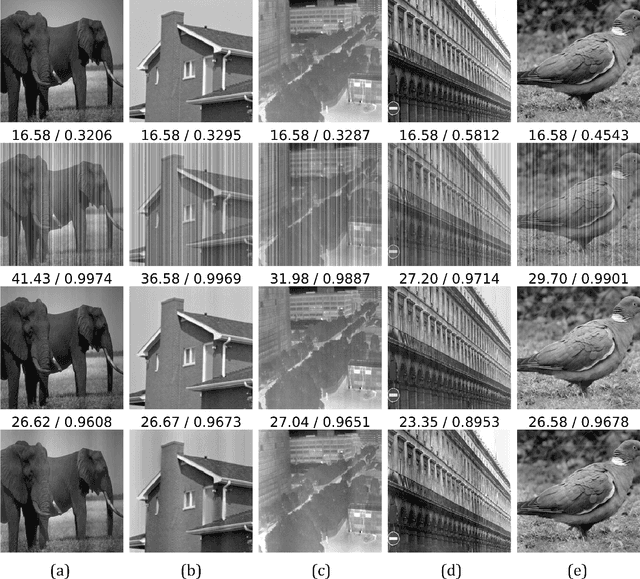
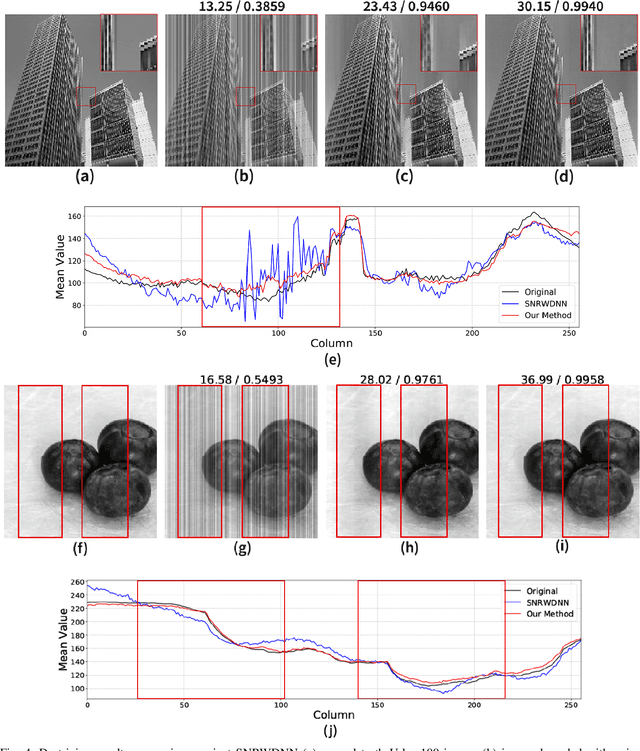
Abstract:The non-uniform photoelectric response of infrared imaging systems results in fixed-pattern stripe noise being superimposed on infrared images, which severely reduces image quality. As the applications of degraded infrared images are limited, it is crucial to effectively preserve original details. Existing image destriping methods struggle to concurrently remove all stripe noise artifacts, preserve image details and structures, and balance real-time performance. In this paper we propose a novel algorithm for destriping degraded images, which takes advantage of neighbouring column signal correlation to remove independent column stripe noise. This is achieved through an iterative deep unfolding algorithm where the estimated noise of one network iteration is used as input to the next iteration. This progression substantially reduces the search space of possible function approximations, allowing for efficient training on larger datasets. The proposed method allows for a more precise estimation of stripe noise to preserve scene details more accurately. Extensive experimental results demonstrate that the proposed model outperforms existing destriping methods on artificially corrupted images on both quantitative and qualitative assessments.
MICAL: Mutual Information-Based CNN-Aided Learned Factor
Jun 06, 2022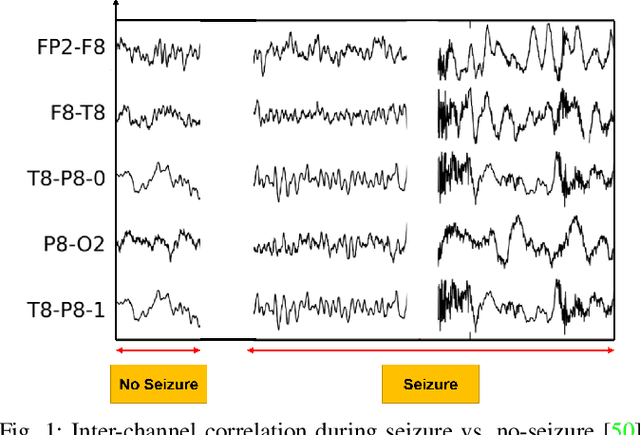

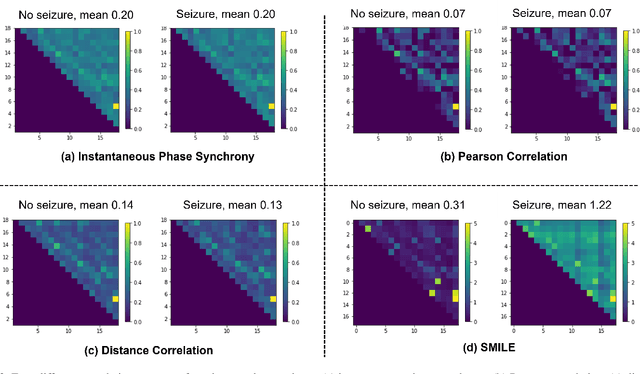
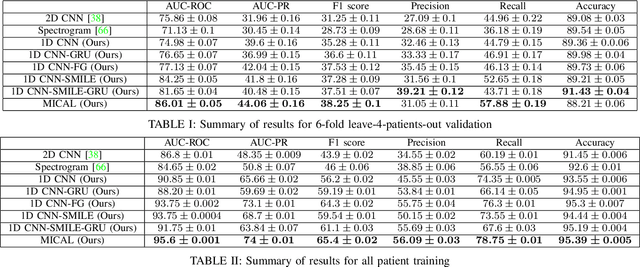
Abstract:We develop a hybrid model-based data-driven seizure detection algorithm called Mutual Information-based CNNAided Learned factor graphs (MICAL) for detection of eclectic seizures from EEG signals. Our proposed method contains three main components: a neural mutual information (MI) estimator, 1D convolutional neural network (CNN), and factor graph inference. Since during seizure the electrical activity in one or more regions in the brain becomes correlated, we use neural MI estimators to measure inter-channel statistical dependence. We also design a 1D CNN to extract additional features from raw EEG signals. Since the soft estimates obtained as the combined features from the neural MI estimator and the CNN do not capture the temporal correlation between different EEG blocks, we use them not as estimates of the seizure state, but to compute the function nodes of a factor graph. The resulting factor graphs allows structured inference which exploits the temporal correlation for further improving the detection performance. On public CHB-MIT database, We conduct three evaluation approaches using the public CHB-MIT database, including 6-fold leave-four-patients-out cross-validation, all patient training; and per patient training. Our evaluations systematically demonstrate the impact of each element in MICAL through a complete ablation study and measuring six performance metrics. It is shown that the proposed method obtains state-of-the-art performance specifically in 6-fold leave-four-patients-out cross-validation and all patient training, demonstrating a superior generalizability.
CNN-Aided Factor Graphs with Estimated Mutual Information Features for Seizure Detection
Mar 11, 2022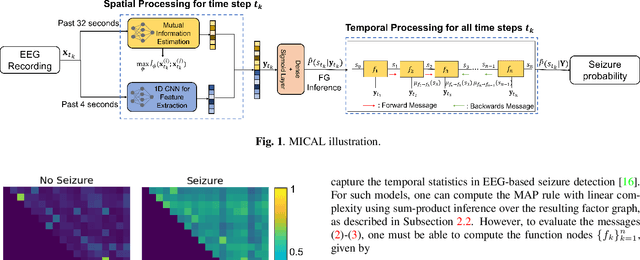
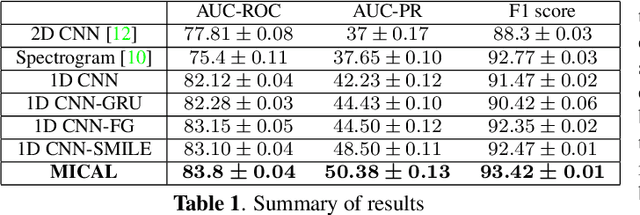
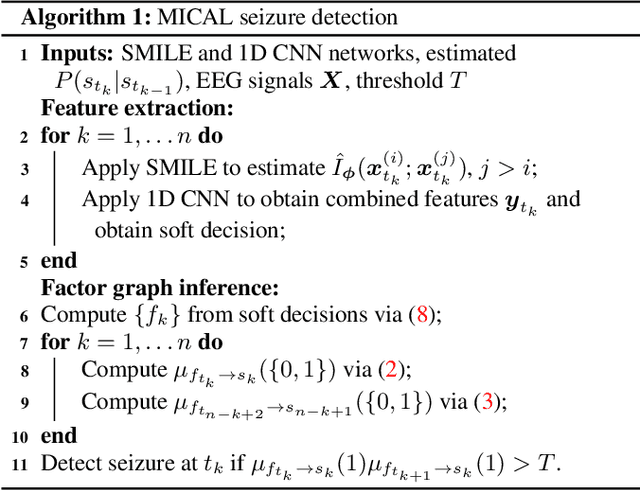
Abstract:We propose a convolutional neural network (CNN) aided factor graphs assisted by mutual information features estimated by a neural network for seizure detection. Specifically, we use neural mutual information estimation to evaluate the correlation between different electroencephalogram (EEG) channels as features. We then use a 1D-CNN to extract extra features from the EEG signals and use both features to estimate the probability of a seizure event.~Finally, learned factor graphs are employed to capture the temporal correlation in the signal. Both sets of features from the neural mutual estimation and the 1D-CNN are used to learn the factor nodes. We show that the proposed method achieves state-of-the-art performance using 6-fold leave-four-patients-out cross-validation.
Neural Capacity Estimators: How Reliable Are They?
Nov 21, 2021

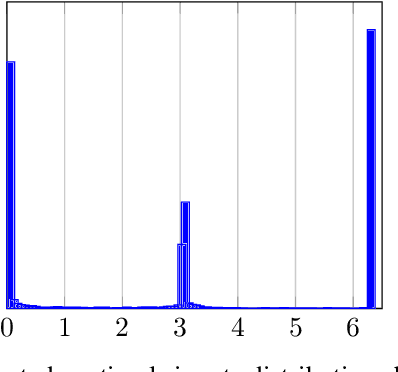
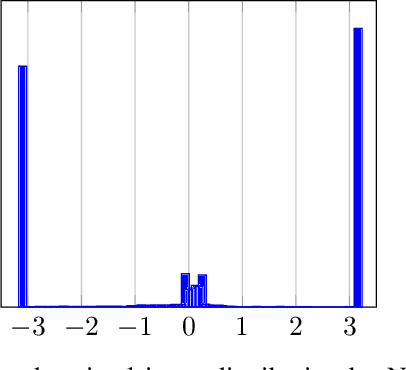
Abstract:Recently, several methods have been proposed for estimating the mutual information from sample data using deep neural networks and without the knowing closed form distribution of the data. This class of estimators is referred to as neural mutual information estimators. Although very promising, such techniques have yet to be rigorously bench-marked so as to establish their efficacy, ease of implementation, and stability for capacity estimation which is joint maximization frame-work. In this paper, we compare the different techniques proposed in the literature for estimating capacity and provide a practitioner perspective on their effectiveness. In particular, we study the performance of mutual information neural estimator (MINE), smoothed mutual information lower-bound estimator (SMILE), and directed information neural estimator (DINE) and provide insights on InfoNCE. We evaluated these algorithms in terms of their ability to learn the input distributions that are capacity approaching for the AWGN channel, the optical intensity channel, and peak power-constrained AWGN channel. For both scenarios, we provide insightful comments on various aspects of the training process, such as stability, sensitivity to initialization.
Efficient Epileptic Seizure Detection Using CNN-Aided Factor Graphs
Aug 05, 2021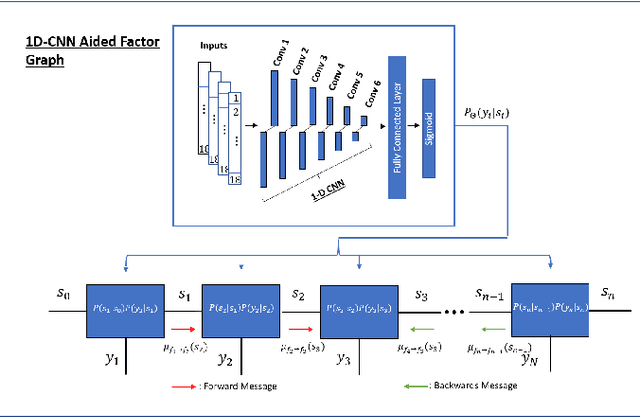
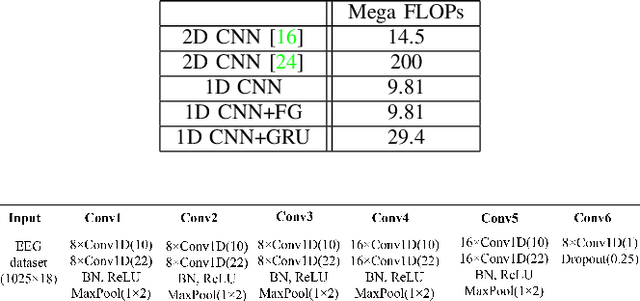
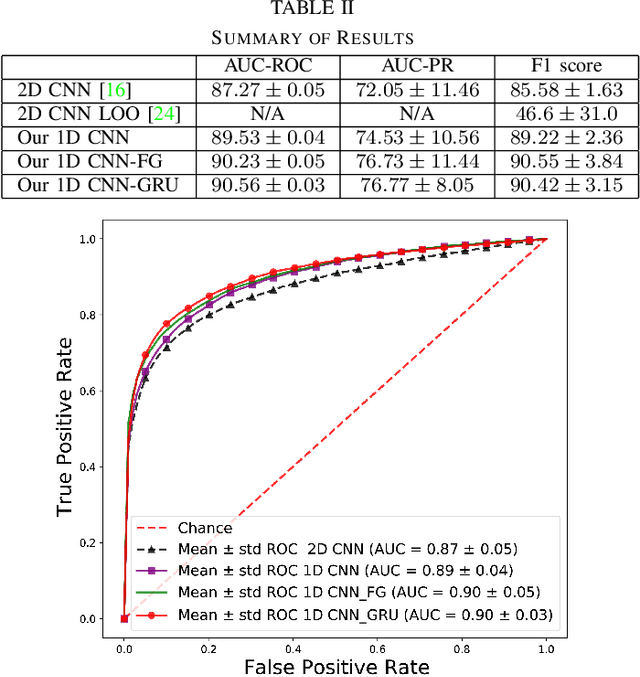
Abstract:We propose a computationally efficient algorithm for seizure detection. Instead of using a purely data-driven approach, we develop a hybrid model-based/data-driven method, combining convolutional neural networks with factor graph inference. On the CHB-MIT dataset, we demonstrate that the proposed method can generalize well in a 6 fold leave-4-patientout evaluation. Moreover, it is shown that our algorithm can achieve as much as 5% absolute improvement in performance compared to previous data-driven methods. This is achieved while the computational complexity of the proposed technique is a fraction of the complexity of prior work, making it suitable for real-time seizure detection.
Model-Based Machine Learning for Communications
Jan 12, 2021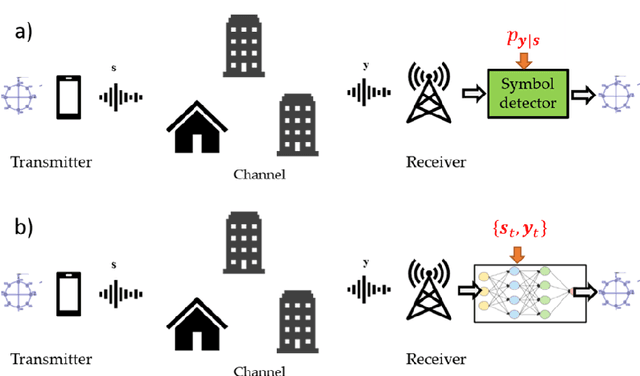



Abstract:We present an introduction to model-based machine learning for communication systems. We begin by reviewing existing strategies for combining model-based algorithms and machine learning from a high level perspective, and compare them to the conventional deep learning approach which utilizes established deep neural network (DNN) architectures trained in an end-to-end manner. Then, we focus on symbol detection, which is one of the fundamental tasks of communication receivers. We show how the different strategies of conventional deep architectures, deep unfolding, and DNN-aided hybrid algorithms, can be applied to this problem. The last two approaches constitute a middle ground between purely model-based and solely DNN-based receivers. By focusing on this specific task, we highlight the advantages and drawbacks of each strategy, and present guidelines to facilitate the design of future model-based deep learning systems for communications.
Inference from Stationary Time Sequences via Learned Factor Graphs
Jun 05, 2020
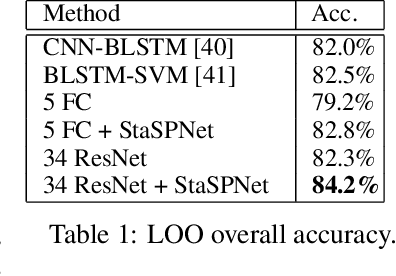
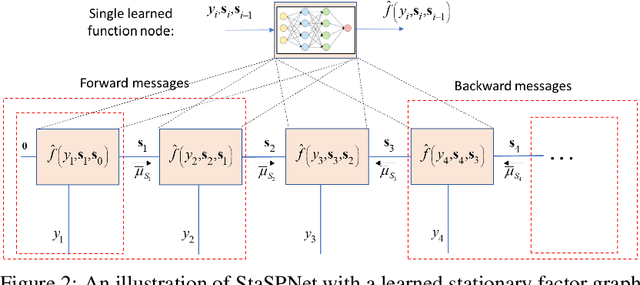

Abstract:The design of methods for inference from time sequences has traditionally relied on statistical models that describe the relation between a latent desired sequence and the observed one. A broad family of model-based algorithms have been derived to carry out inference at controllable complexity using recursive computations over the factor graph representing the underlying distribution. An alternative model-agnostic approach utilizes machine learning (ML) methods. Here we propose a framework that combines model-based inference algorithms and data-driven ML tools for stationary time sequences. In the proposed approach, neural networks are developed to separately learn specific components of a factor graph describing the distribution of the time sequence, rather than the complete inference task. By exploiting stationary properties of this distribution, the resulting approach can be applied to sequences of varying temporal duration. Additionally, this approach facilitates the use of compact neural networks which can be trained with small training sets, or alternatively, can be used to improve upon existing deep inference systems. We present an inference algorithm based on learned stationary factor graphs, referred to as StaSPNet, which learns to implement the sum product scheme from labeled data, and can be applied to sequences of different lengths. Our experimental results demonstrate the ability of the proposed StaSPNet to learn to carry out accurate inference from small training sets for sleep stage detection using the Sleep-EDF dataset, as well as for symbol detection in digital communications with unknown channels.
 Add to Chrome
Add to Chrome Add to Firefox
Add to Firefox Add to Edge
Add to Edge